Job Loss Due To AI — How Bad Is It Going To Be?
Studies suggest the impact of AI on jobs in the near future will not be significantly more disruptive than the impact of automation in the past

Key Takeaways
- Recent AI advances, while seemingly impressive, are very narrow in scope and require a lot of human supervision and input to work in real applications.
- While as many as 47% of current jobs contain tasks that may be automatable, less than 5% of jobs will be fully automatable by 2030.
- The actual percentage of jobs that will be automated will be lower, because technology adoption lags behind technology development due to costs in implementation, maintainence, and overcoming cultural and regulatory hurdles.
- Like with many new technology that came before, many AI tools will augment and not replace workers by automating subtasks of a job. This augmentation may raise demand in some industries while depressing wages in others.
- For the jobs that AI will displace, the impact will vary greatly across countries, industries, education levels, socioeconomic status, age, and gender. These disparities may have socially and politically destabilizing effects.
- To alleviate short-term economic impact, it is important for governments to enact policies that value human capital and help displaced workers transition to new jobs in growing industries, such as healthcare and education.
Introduction
The concern of Artificial Intelligence (AI) taking over everyone’s jobs is becoming increasingly urgent as recent AI breakthroughs (likeAlphaGo, IBM Watson, self-driving cars, and many more) attract publicattention. As AI progresses, some believe that it will steadily and inevitably take over large sectors of the workforce and will bring mass-scale unemployment and social unrest. One widely cited estimate, from a 2013 Oxford study, is that as much as 47% of current US jobs are at risk of automation 1. Such large numbers have prompted a myriad of fearful responses in popular media, with articles like “The AI Revolution Is Coming—And It Will Take Your Job Sooner Than You Think” and “New Study: Artificial Intelligence Is Coming For Your Job, Millennials.”
But, just how warranted are these concerns? What do history and the most recent studies tell us about how AI based automation will impact our jobs and the future of society? And in particular, will the impact of AI-based automation be any more significant than that of non-AI based automation enabled by computers and robotics in the past?
After all, recent advances in more intelligent robotics to perform physical labor and AI software to perform mental labor follow a long line of technological developments via automation starting from the first industrial revolution. While many expect recent AI technologies to affect society in dramatically different ways than technological developments in the past, evidence supports the contrary.
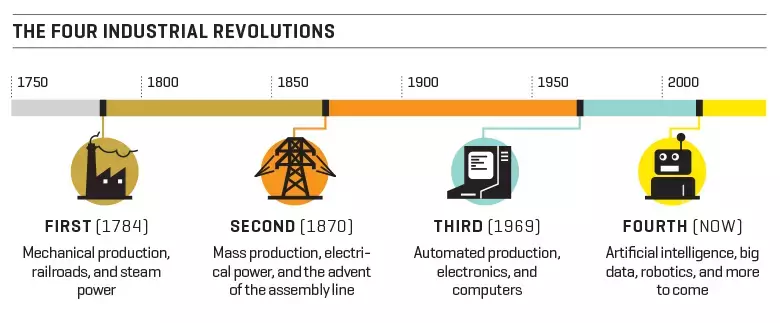
In this article, we summarize the findings of recent studies and argue that the impact of AI on jobs in the near future will (most likely) not be significantly more disruptive than the impact of automation has been in the past. The number of jobs created by AI and automation in general will likely outnumber the jobs displaced. However, because workers of different countries, sectors, and income-levels will be affected differently, we still need governments to proactively enact prescriptive labor policies to facilitate smooth workforce transitions.
Automation and Labor in the Past
The Fears
Despite the generally positive regard for the effects of past industrial revolutions, concerns about mass unemployment as a result of new technology still exist and trace their roots to long before such automation was even possible. For example, in his work Politics, Aristotle articulated his concerns about automation in Ancient Greece during fourth century BC:
If every instrument could accomplish its own work, obeying or anticipating the will of others, like the statues of Daedalus, or the tripods of Hephaestus, which, says the poet, ‘of their own accord entered the assembly of the gods;’ if, in like manner the shuttle would weave and the plectrum touch the lyre without a hand to guide them, chief workmen would not want servants, nor masters slaves.
Moreover, when William Lee attempted to patent his stocking frame knitting machine in 1589, he was rebuffed by Queen Elizabeth I who remarked: “Consider thou what the invention could do to my poor subjects. It would assuredly bring to them ruin by depriving them of employment, thus making them beggars”2.
Perhaps the most well-known example of the opposition to new technology is that of the Luddites. Though today the term refers to a general unsophisticated opposition to progress in technology, it originally referred to an organization of 19th century English textile workers, who protested about how their jobs were lost to new technology by destroying textile machines.
Technological progress in the first half of the twentieth century again raised fears about mass unemployment. For example, concerns about the disruptive impact of automation on the labor market found itself discussed in James Joyce’s novel, Ulysses.
A pointsman’s back straightened itself upright suddenly against a tramway standard by Mr. Bloom’s window. Couldn’t they invent something automatic so that the wheel itself much handier? Well but that fellow would lose his job then? Well but then another fellow would get a job making the new invention?
Even though he had an optimistic view of the future in which the standard of living would increase dramatically, John Maynard Keynes also raised concerns about what he called ‘technological unemployment’. In 1964, as a response to concerns about the impact of automation on employment opportunities, President Johnson established the National Commission on Technology, Automation, and Economic Progress.
The view of economists during this period was deeply pessimistic. For example, Robert Heilbroner argued that, “as machines continue to invade society, duplicating greater and greater numbers of social tasks; it is human labor itself – at least, as we now think of ‘labor’ – that is gradually rendered redundant.” Moreover, one can get a good feel of the mood of leading economists at the time from some of the chapter titles in Ben B. Seligman’s 1966 work, Most Notorious Victory: Man in an Age of Automation, which include “A Babel of Calculators”, “Work Without Men”, and “The Trauma We Await”.
These fears have persisted into recent history. The advent of personal computers in the 1980s led to a widespread phenomenon known as computerphobia, with people worrying that computers would lead to mass unemployment. Advances in information technology, and in particular the internet, led many in the 1990s to predict a world without work - these same predictions are being made today about AI.
Of course, these fears are not without basis. The Industrial Revolution is broadly seen as having been a positive development today, but for those who lived through it it was also a turbulent transition that caused harm as well as benefit for many.
The Facts
Fears aside, it is true that automation of existing jobs has been a fact of life for centuries. In the twentieth century, the proportion of the workforce in agriculture decreased from 40% in 1900 to just 10% in 1950. Now, that figure is even lower - 2%3. With more efficient tools, machines, and better understanding of science, agriculture’s productivity has soared in the last century - fewer people were needed to do the same amount of work, and many agriculture jobs were lost. Even more drastic trends can be observed in other countries, like China, where one-third of the country’s workforce shifted out of agriculture from 1990 to 20154.
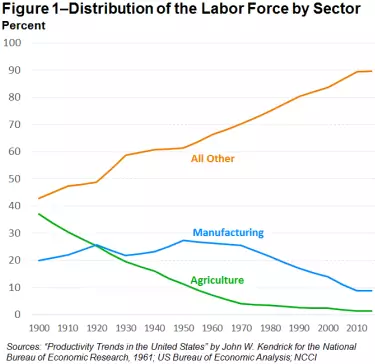
In the U.S., the impact of this seismic shift in employment from agriculture to industrial then service sectors was smoothed by a number of factors. In the early 20th century the U.S. made major investments to expand secondary education. For the first time, children aged 14 to 17 were required to attend high schools, raising enrollment from 18% in 1910 to 73% in 19405. The 1944 G.I. Bill helped give college education and technical training to 8 million WWII veterans6. Together with the U.S.’s industrialization during the war and investment in infrastructure, these policies made American workers among the best educated and most productive in the world. They helped workers displaced by agricultural automation to smoothly transition to new jobs in manufacturing, trade, and services, and many of these jobs were also created by technological advancements.
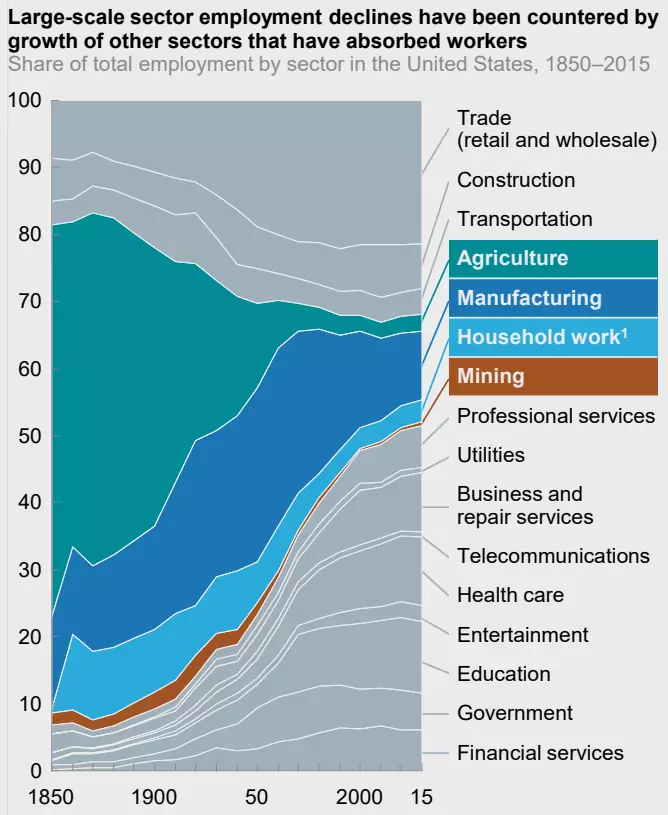
Sometimes automation leads to worker displacement - decreased employment as many workers are replaced by a few machines. Other times the increased productivity may actually create more jobs in the sector that is being automated, via a process called worker augmentation. For example, the rapid adoption of Automated Teller Machines (ATMs) from the 1980s to the 2000s counterintuitively increased the number of bank teller jobs throughout that period7. While the bank tellers per bank office decreased, ATMs lowered the cost of opening new bank offices in general, so the number of bank offices increased. This led to banks hiring more bank-related workers and therefore also more bank tellers. But, something did change: the job description of the bank tellers, who began to focus more on handling customer relations as their more routine tasks were being automated.
In addition, automation improves productivity in other sectors and can grow the economy as a whole. The Industrial Revolution saw the introduction of new labor saving devices and technology which did result in many jobs becoming obsolete. However, this led to new, safer, and better jobs being created an also resulted in the economy growing and living standards increasing.
Political Economist Joseph Schumpeter called this – the process of technology disrupting industries and destroying jobs, but ultimately creating new, better ones and growing the economy – “creative destruction”. The Oxford study notes:
Throughout history, technological progress has vastly shifted the composition of employment, from agriculture and the artisan shop, to manufacturing and clerking, to service and management occupations. Yet the concern over technological unemployment has proven to be exaggerated. […] As economists have long understood, however, an invention that replaces workers by machines will have effects on all product and factor markets. An increase in the efficiency of production which reduces the price of one good, will increase real income and thus increase demand for other goods.
For example, Research conducted by Deloitte revealed that between 2001 and 2015, technology had displaced over 800,000 jobs in the UK alone, but it had created approximately 3.5 million new ones. Claims that new technology will lead to mass unemployment have been present throughout history, but thus far the opposite has actually happened. As such, we should treat any similar claims about the impact of AI with caution.
In summary, for many cases in the past, we see a story that goes roughly like this:
-
Technology-enabled automation displaces some workers and augments others.
-
Displaced workers transition to new jobs, some of which are created by automation. The government helps to facilitate this transition via investments in training and education.
-
Increased productivity raises incomes, lowers work hours (average work time in the U.S. has fallen more than 50% since the early 1900s8), and lowers prices, creating more demand for goods and services, leading to more jobs and broader economic growth.
How well do we expect this pattern to hold with AI-enabled automation in the near future, and will they replace jobs faster than they create them? In other words…
Is it going to be the same story with AI?
Defining AI
To answer the above question we first have to establish what “AI” means. The first computer program to beat a human world champion in chess is IBM’s Deep Blue, and it was seen as a historic milestone for AI by the public in 1996. Today however, few would consider iPhone chess apps examples of powerful AI, yet these apps are typically much better at chess than Deep Blue ever was9. This “moving of the goal post” for AI is often explained by the saying “AI is whatever hasn’t been done yet.” Clearly, it is not possible to characterize the economic impact of such an all-encompassing idea.
Instead, for the purposes of this article we will define “AI” in very high level terms as the following: software that is optimized for a particular task by “learning” from data, as opposed to traditional software that is completely hand-coded by people. Today, we have “weak” or “narrow” AI - that is, algorithms that can only be taught to tackle single specific tasks. For example, Deep Blue was better than any human at chess but incapable of playing checkers, and the more recent AlphaGo was masterful at Go but could not also beat you at tic-tac-toe (in both cases the methods could be adapted to play other games, but not without some engineering and effort). Beyond games, this type of “narrowness” applies to just about any application of AI today; an AI program optimized to recognize faces cannot also output the color of a person’s hair or classify them as female or male, unless specifically engineered to do so.
All references to AI below will mean this “weak” or “narrow” variety. In this article we do not consider “strong” or “generalized” AI, a type of AI that is theoretically capable of (super)human-level intelligence across a broad range of skills. Most AI researchers believe that strong AI is unlikely to materialize in the near future, and even weak AI is likely to have outsized impacts on jobs and the economy.
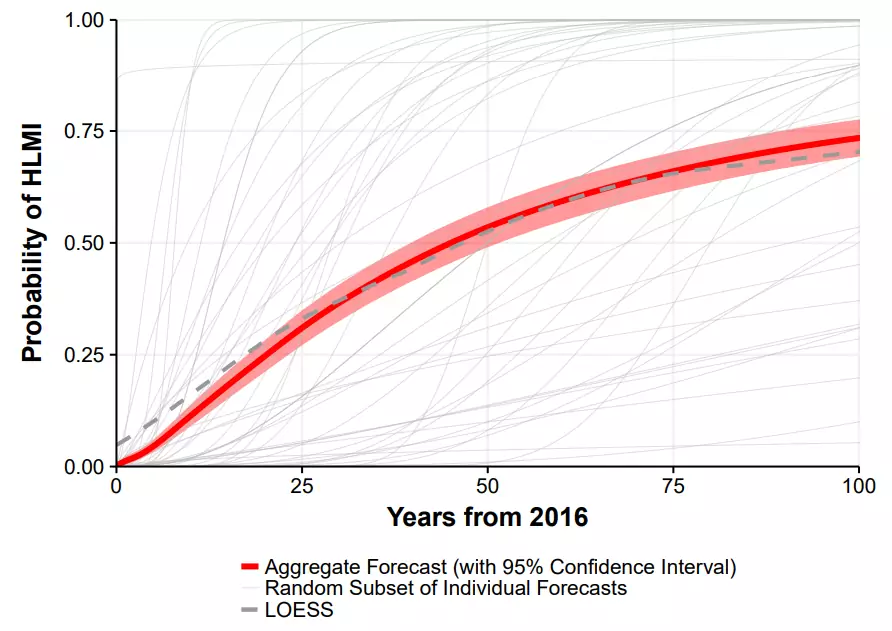
Job Augmentation
Researchers made significant progress in AI over the last decade or so. We hear news of AI beating or approaching human level performance in games (Go, Dota, Poker, Jeopardy), robots performing tasks outside of manufacturing (mall security, flipping burgers, backflipping humanoid), and impressive results in pattern recognition and generation (classifying images, writing news articles, composing music, drawing human faces, reviewing legal documents, making phone appointments). Just see how machine-generated faces have improved over a span of 5 years:

All of this have led many to speculate that AI and AI-powered robots are coming for everyone’s jobs, and this time is going to be different from how automation affected society in the past, because this time automation is automating “non-routine” labor. As well characterized in the Oxford study10:
Historically, computerisation has largely been confined to manual and cognitive routine tasks involving explicit rule-based activities (Autor and Dorn, 2013; Goos, et al. , 2009). Following recent technological advances, however, computerisation is now spreading to domains commonly defined as non-routine. The rapid pace at which tasks that were defined as non-routine only a decade ago have now become computerisable is illustrated by Autor, et al. (2003), asserting that: “Navigating a car through city traffic or deciphering the scrawled handwriting on a personal check – minor undertakings for most adults – are not routine tasks by our definition.” Today, the problems of navigating a car and deciphering handwriting are sufficiently well understood that many related tasks can be specified in computer code and automated (Veres, et al. , 2011; Plötz and Fink, 2009).
Some speculate that AI may become so advanced as to make human labor obsolete, much as the dawn of automobiles made horses largely obsolete as a means of transportation. The video below,“Humans Need Not Apply,” describes this fear that due to advances in AI, many humans will soon become unemployable through no fault of their own:
While these concerns have some merit, most who express them extrapolate the impact of AI from newsworthy demos that are cherry-picked by the source companies or research groups. These technologies still require a lot of human input, and it’s very difficult to apply advances in games and pattern recognition to fully perform human jobs. Unbeknownst to many viewers, Boston Dynamics’ door-opening robots are remote controlled, and while IBM Watson won Jeopardy, it is struggling at its real goals in bringing AI to healthcare. Finally, as we already established that AI is most likely staying in the “narrow” domain for the foreseeable future, this “humans becoming obsolete” scenario is unlikely to happen anytime soon. Instead, AI is much more likely to augment workers of many jobs, not replace them.
For blue-collar jobs, take the example of self-driving trucks, which numerous startups are working on. Many are worried that they will threaten the jobs of more than 3.5 million American truck drivers. The more likely scenario is that truck drivers will be responsible for city driving and in complex road conditions, while driving on highways will be automated11. CEO of Waymo, the self-driving car company that recently began its ride-hailing service in Arizona, says that self-driving cars that can handle all road conditions without human input will never exist. The previous CEO of Uber also claims for a taxi service using a lot of self-driving cars, due to the need for human interventions, the number of human drivers might actually increase.
In addition, the American Trucking Association reports that the U.S. is actually facing an acute truck driver labor shortage, as the industry needs to hire 90,000 new drivers per year for the next decade to meet demand, 33% of which are due to industry growth and not retiring drivers 12. In response, Walmart recently raised trucking wages to attract more truck drivers. The American Center for Mobility says that self-driving truck technology “has the potential to lead to the creation of thousands of new jobs in the engineering, data analysis, cybersecurity and vehicle ‘monitoring’ areas”. Considering the growing demand for trucking and the need for skilled human drivers in many road conditions, the Global Innovation Lead of the World Road Transportation Organization claims “autonomous vehicles are not going to take away jobs.”
Lastly, like other jobs mentioned in this article, truck driving consists of many tasks, some of which have high automation potential, and some don’t. Even if truck driving can be fully automated, other tasks that truck drivers routinely perform such as customer service, loading and unloading cargo, and vehicle maintenace have much lower automation potential, so it is unlikely that self-driving trucks will replace truck drivers alone.
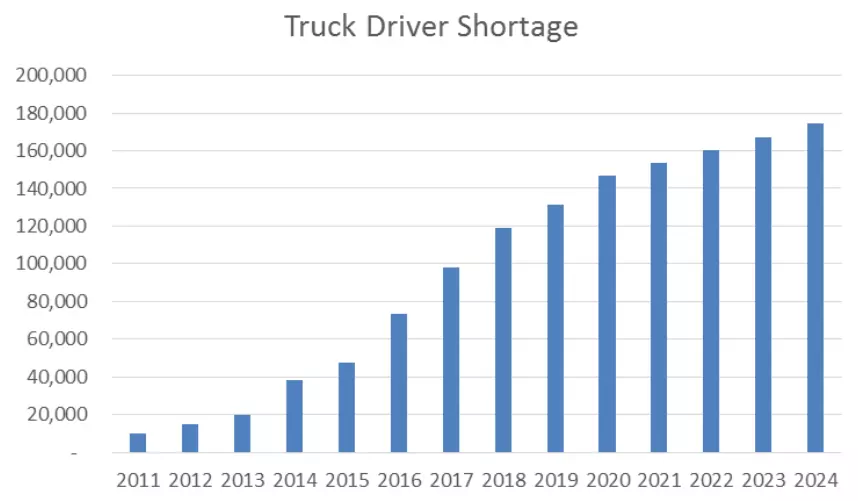
As for white-collar jobs, a legal-tech startup was in the news earlier this year for beating a team of human lawyers at reviewing contracts, spotting 94% of the legal risks versus an average of 85% for the 20 human lawyers. This tool however, will not replace lawyers as they perform more functions than just reviewing contracts. It will likely open up valuable times for lawyers, allowing them to focus on more higher-level tasks. The startup even states in its study that their contract-reviewing AI “is not meant to be, nor indeed is it currently capable of being, used as a standalone tool.”
A similar observation can be made about the so-called “creative AIs.” Google’s Project Magenta uses machine learning to create new sounds and automate parts of the music production process. Far from replacing artists, a quick glance at its tools shows how AI can augment artists by expediting tedious tasks such as music transcription and picking out interesting sounds. The creator of Latent Loops, an AI-powered software that helps musicians discover new melodies, says:
Drum machines didn’t put drummers out of business, even though people were skeptical of them at first. They also didn’t make it so that every person on earth could construct a sick beat. They did, however, enable new types of musicians to express themselves in new ways. And have a huge impact on the way music sounds today.
These examples show how AI-powered augmentation can make workers more efficient and enable them to perform more complex jobs at higher levels. Importantly, humans are still needed for these roles. Professor Ken Goldberg, a leading robotics researcher, calls this “Multiplicity”, where diverse combinations of people and machines work together to solve problems and innovate. He notes:
A combination of collective intelligence with AI enables many of the most sophisticated and effective systems in use today; and if people stopped providing input, these systems would quickly become outdated and deteriorate. […] The most important question we’re facing is not, “When will machines surpass human intelligence?” but instead “How can humans work together with machines in new ways?”
Most of the recent advances in AI in pattern recognition and predictive modeling are driven by the increasing amount of data modern computers can handle, and a recent study found that no job can be fully automated by this type of AI. As such, extrapolating AI’s competency at performing a small part of a job to claim that AI will replace humans to do the entire job is not valid.
But, if not by such extrapolation, how does the Oxford study conclude that 47% of jobs are at high risk for automation? Even if augmentation will be part of the story, surely some jobs will be lost. Which jobs will be most impacted, and how does that compare to job displacement caused by automation in the past? Even if the apocalyptic “humans obsolete” future is not coming, how worried should we be about what is?
Job Displacement
To assess the impact of AI-enabled software and robotics on job displacement, many studies13 have taken a task-based approach: list all the tasks that a person needs to perform for a job, then see what proportion of all the tasks in a job is automatable with current and near-future technology.
According to the Oxford study, the jobs that are not automatable in the near future are ones with tasks that relate to these “computerisation bottlenecks”:
-
perception and manipulation (e.g. dexterous manipulation of objects/tools),
-
creative intelligence (e.g. creative problem solving, the arts),
-
social intelligence (e.g. understanding others’ emotions, negotiation/persuasion, assisting and caring for others).
By filtering out jobs that involve such tasks, the Oxford study arrived at the number that currently 47% of U.S. jobs are automatable. Note that this is not an estimate of how many jobs will be lost to automation, just how many jobs can be theoretically automated.
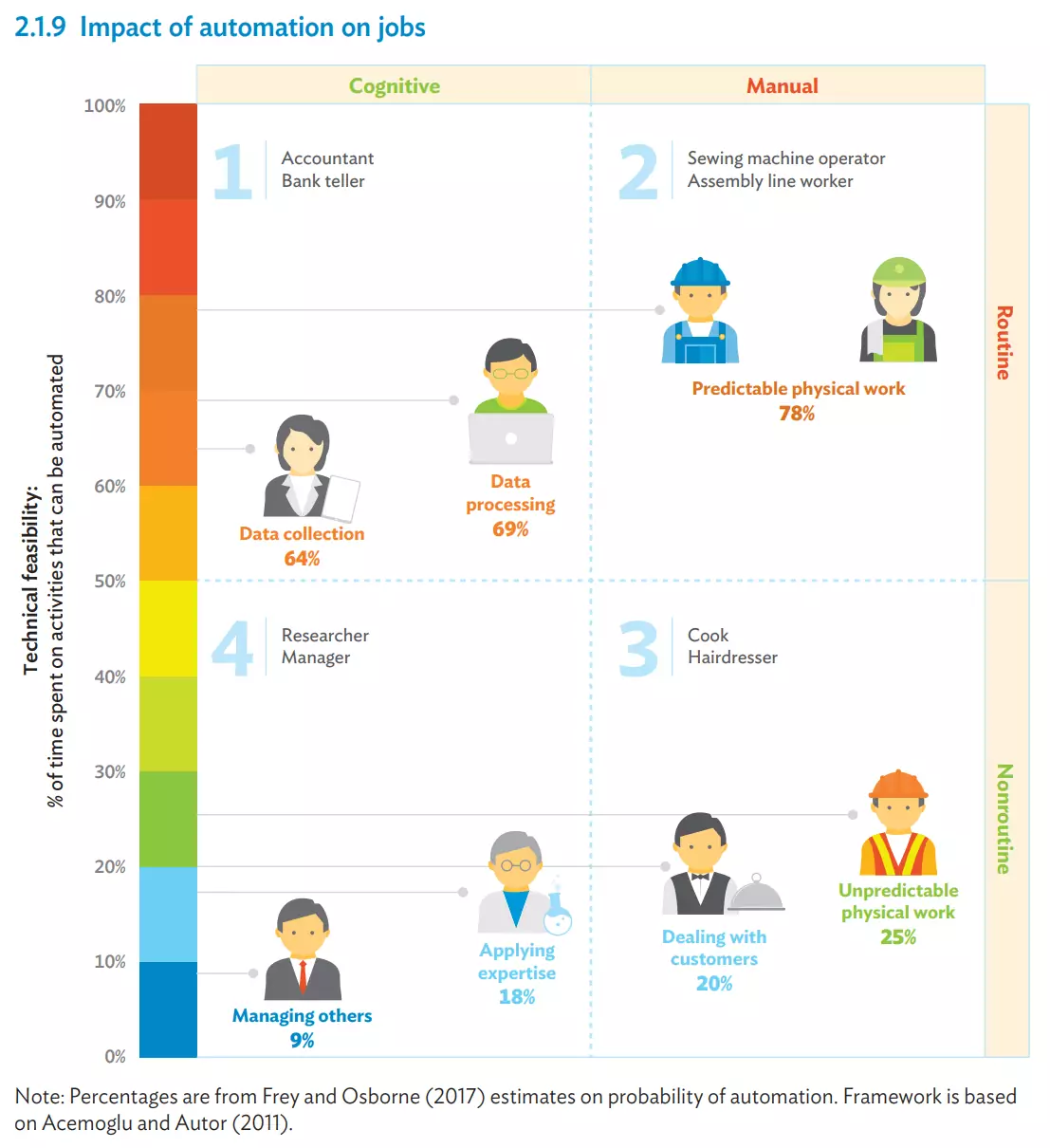
A more recent, in-depth study by McKinsey gives a more nuanced estimate - by 2030 60% of jobs will be made up of tasks that are at least 30% automatable14, but less than 5% of jobs will be fully automatable15.
The jobs most susceptible to automation are the ones in data keeping (e.g. record clerks, office assistants), low-level customer interaction (e.g. hotel/travel booking, cashiers, food service workers), and other jobs with predictable, highly routine tasks (e.g. assembly line workers, dishwashers, drivers)16. Like the bank tellers in the ATM example however, it is likely that the workers of many of these automatable jobs will be augmented by new technology instead. Gartner estimates that by 2022, 20% of workers who perform nonroutine tasks will rely on AI to do the job (e.g. automatically generating reports, picking top emails to read)17.
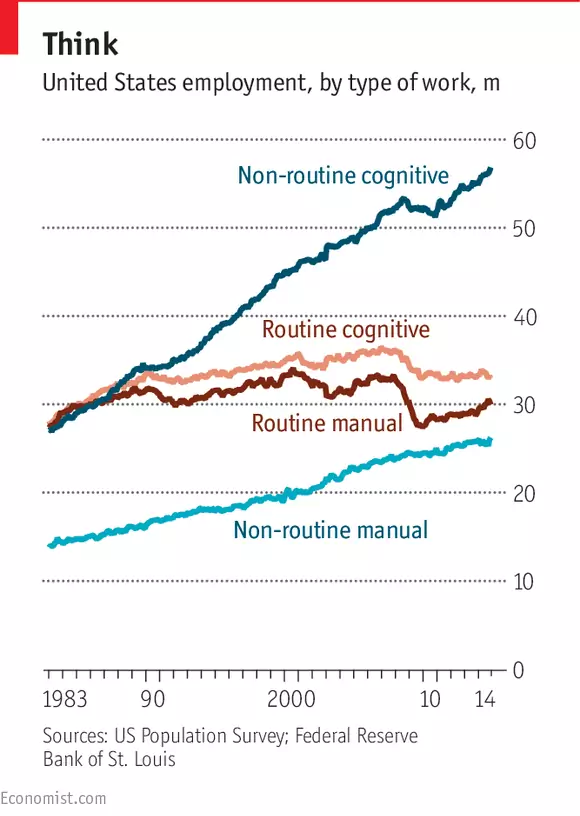
McKinsey estimates that worldwide by 2030 automation will only displace 15% of workers18, and at most 14% of the global workforce will need to switch job categories19, even though 60% of jobs will be susceptible to automation20. A study by OECD reports similar statistics: about 14% of jobs across OECD countries will be highly automatable, while 50-70% of jobs will have a third of the tasks susceptible to automation21. Another study by the University of Mannheim gives an even lower estimate - only 9% of jobs in the U.S. are at high risk of automation22. These studies arrived at lower numbers than the Oxford one by taking a more granular approach, accounting for the variations in tasks across jobs within the same type of occupation.
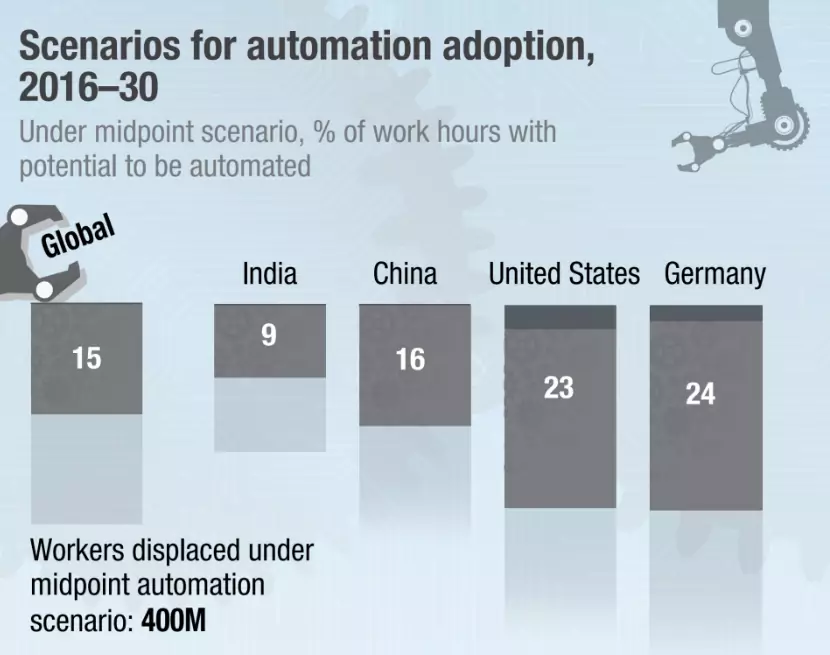
Yet, this is only part of the picture. Due to the cost of technology adoption (e.g. the cost of acquiring and integrating new technology, following regulations, and overcoming social and cultural norms), just because a job can be automated does not mean that it will be. The Oxford study actually clarifies that:
We focus on estimating the share of employment that can potentially be substituted by computer capital, from a technological capabilities point of view, over some unspecified number of years. We make no attempt to estimate how many jobs will actually be automated. The actual extent and pace of computerisation will depend on several additional factors which were left unaccounted for.
While cheap labor jobs in restaurants, services, and manufacturing have the highest automation risks, they may have much lower automation penetration. Upgrading infrastructure, especially hardware, is sometimes just not worth the cost. For example, electricity-powered factories are much more cost-efficient than steam-powered ones, but electrification is a costly process, and it took more than 4 decades for half of U.S. factories to be electrified after the idea became realizable23. Even replacing humans with robots in repetitive jobs such as those in manufacturing and warehouse fulfillment requires “breakthroughs in work design that often take years or even decades to achieve.”24 In addition, marginally increasing the cost of cheap labor may not incentivize automation as much as perceived; studies have found that increasing the minimum wage in Seattle to $15/hr had no perceptible effect on the city’s jobs being automated25.
Taking adoption rate into account, the National Council on Compensation Insurance (NCCI) estimates in its baseline scenarios that only 4% of the U.S. workforce will be displaced by automation by 2024 (the top-end estimate, by tripling the expected automation adoption rate, is 13.7%).
While the number of jobs displaced by automation is not as scary as many make it out to be, what is of concern is that automation will not displace jobs evenly across countries, industries, education level, socioeconomic status, age, and gender. Such disparity may have socially and politically destabilizing effects, as displaced workers are often ill-informed about the role of automation and tend to not support policies that “prepare [them] for future technological disruptions.”26
NCCI projects that relative to 2014, by 2024, U.S. manufacturing will lose 1.6 million workers, with automation replacing 6.9% of manufacturing jobs in addition to expected employment losses due to other factors. The same study also reports that information, agriculture, and retail sectors will employ 200,000 fewer workers. Workers in small, rural areas will also be more affected by automation than those in urban areas.
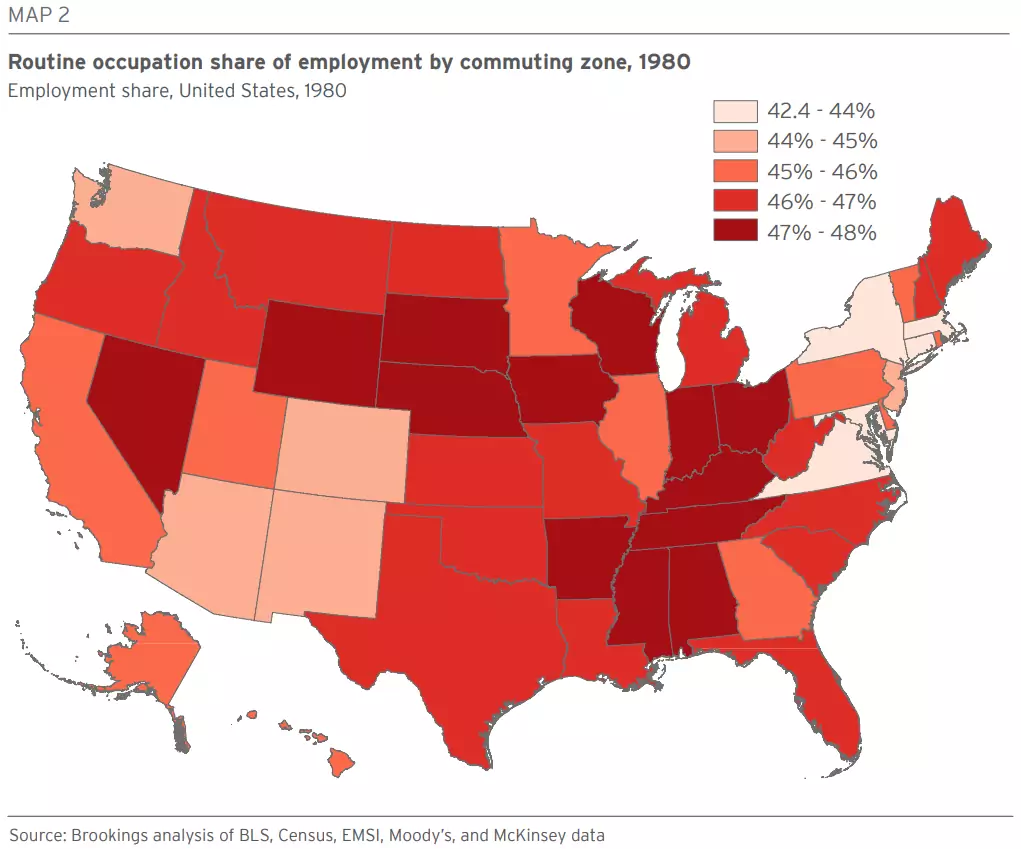
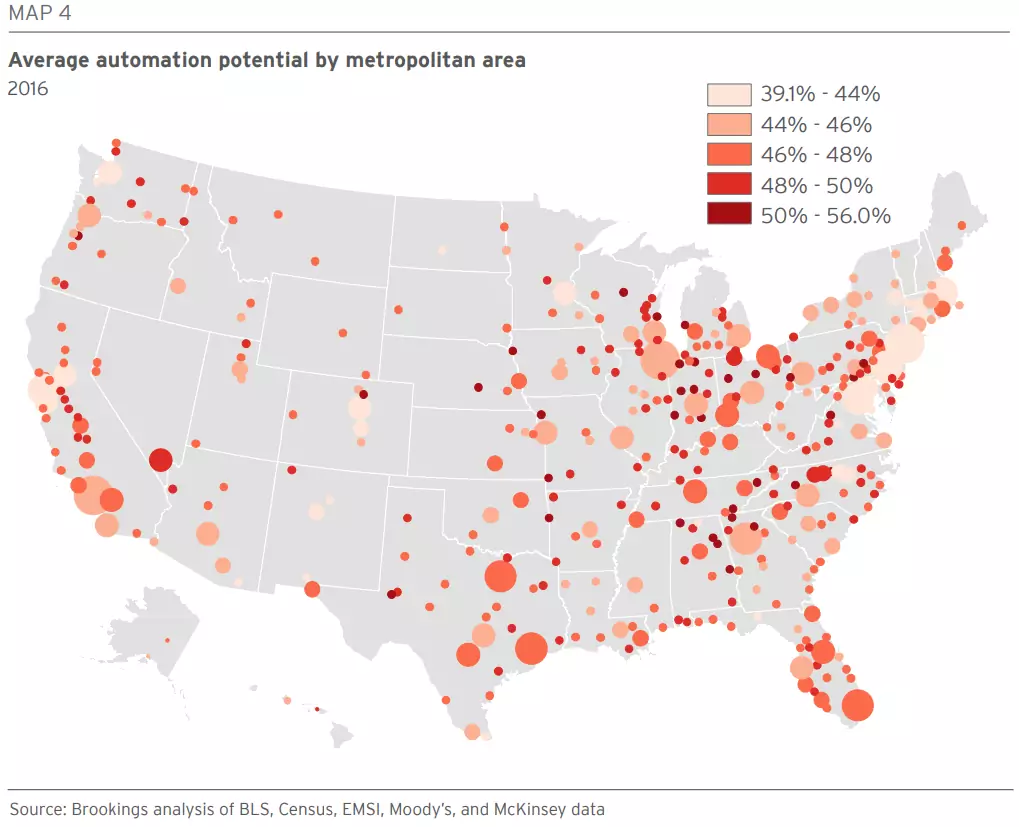
Developed countries will see a higher proportion of jobs automated than developing ones due to higher wages and aging populations27. Differences also exist within developed countries - Japan will likely see more of its jobs automated than the U.S. because its share of labor in highly automatable sectors is higher28.
The sectors at the most risk for automation tend to be middle-income jobs requiring only secondary or associate level education. Demand for these middle-income jobs and employment opportunities for those with low educational attainment will decline as demand for high-wage, high-educational attainment workers improve (see figure below). This plus other ways that automation concentrates wealth will exacerbate the income and wealth inequality problem in advanced economies, especially the U.S., where the benefits of automation increasingly flow to a smaller number of people who can afford good education and own the automation technologies.
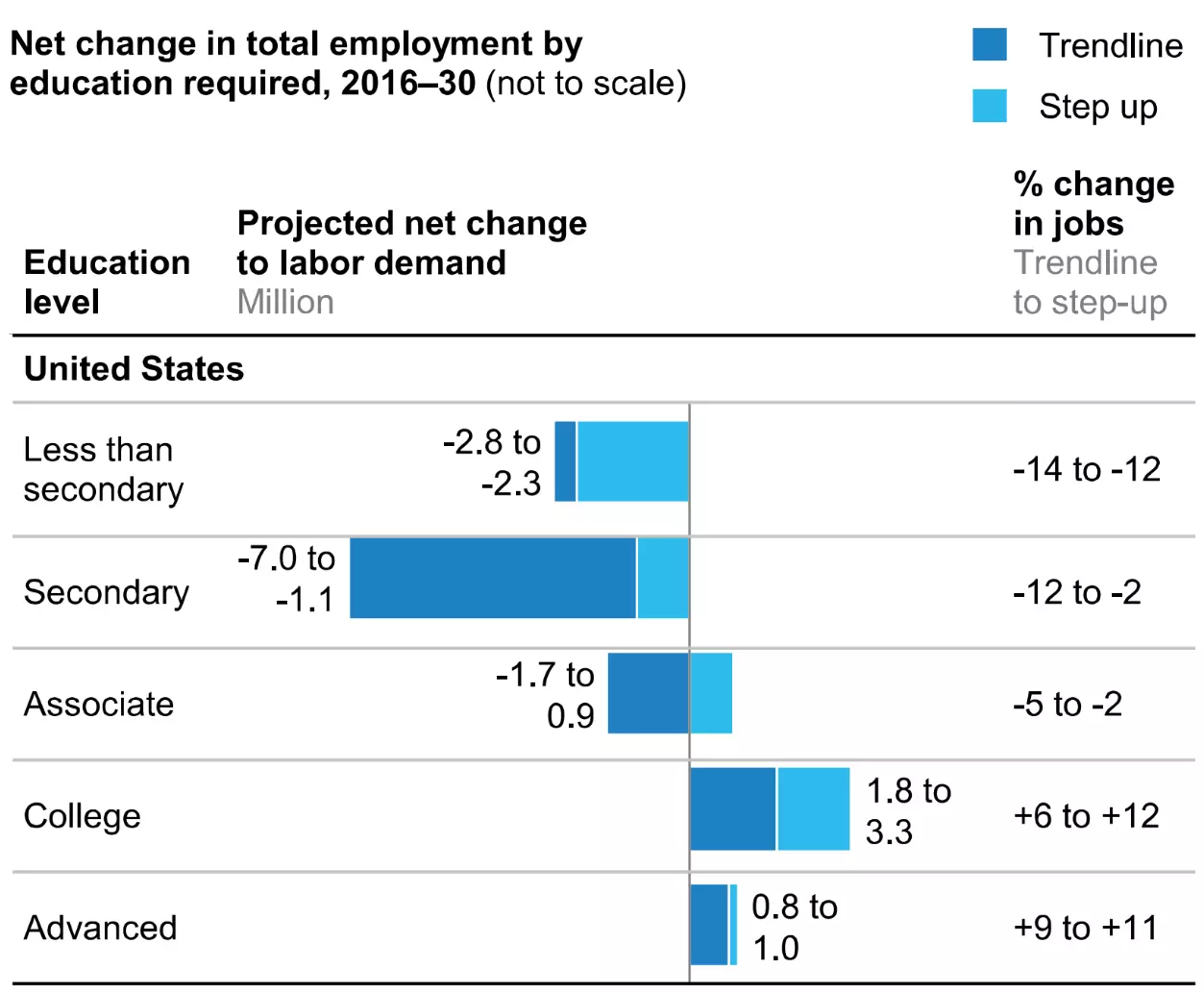
Automation-induced job loss will also affect men more than women, as men make up between 70 to 80% of jobs in manufacturing, agriculture, transportation, and warehousing, sectors with the highest risks of automation29. And, automation will impact young and old workers more than middle-aged ones. Although the youth side of this U-curve is much worse than the other as entry-level jobs tend to have higher risks of automation, young workers tend to be better at finding and adapting to new jobs than senior workers 30.
These trends are slightly more nuanced for the type of automation induced by recent AI advances. A Stanford study31 measuring how exposed a job is to AI-enabled automation by comparing job descriptions with AI patent descriptions found that:
While individuals with low levels of education are somewhat exposed to AI, it is those with college degrees, including Master’s degrees, who are most exposed. Moreover, as might be expected from the fact that AI-exposed jobs are predominantly those involving high levels of education and accumulated experience, it is older workers who are most exposed to AI, with younger workers much less so.
Lastly, automation may also decrease wages for workers in the more automatable industries. For example, U.S. wages in audio transcription has decreased in recent years under the influence of low-cost foreign labor and AI-powered automated transcription tools. To quickly supplant lost income, workers displaced by automation often settle for jobs that pay less than the job they had before. One study finds that one more robot per a thousand workers decreases wages by 0.37%32. While automation has the potential to reduce the risk of injury for dangerous jobs, doing so may also lead to reduced wages for workers in those jobs33.
In short, the concern that AI and other forms of automation will take over everyone’s jobs is unwarranted. Automation will probably displace less than 15% of jobs in the near future, and not nearly as many as 47%. This is because many jobs will be augmented, not replaced, and widespread adoption of new technology is a slow process that incurs nontrivial costs. Historically, shifts this large or larger have already happened and ultimately led to growing prosperity for people on average in the long term. However, automation can exacerbate the problems of income and wealth inequality, and its uneven impact means some communities will be affected much more than others34. Helping displaced workers to quickly transition to and succeed in new jobs will be a tough and important challenge.
Job Creation
Jobs displaced by automation form only one part of the net employment equation. To see how the total number of jobs will change in the near future, we should also look at jobs created by automation as well.
Automation can create new jobs directly through the production, maintenance, and sales of its products and services. But, it creates even more jobs indirectly by improving the productivity of other industries. McKinsey estimates that since the 1980s, personal computers (PCs) have created 15.8 million net new jobs in the U.S., making up about 10% of workforce35. While PCs displaced jobs in bookkeeping and secretarial work, it created many new jobs that didn’t exist before, such as those in manufacturing high-tech components and those that use PCs, like IT support services, call centers, and e-commerce. About 18% of jobs in the U.S. today did not exist in 198036, while the demand for these new jobs will rise to 8~9% by 203037.
Contrary to what some might’ve expected, PCs and the Internet increased the demand for information analysts, even as data collection and analysis became highly automated38. The number of analysts grew from 400,000 in 1980 to 2 million in 2015, as more analysts are needed to make sense of the ever increasing amount of data collected. Similar scaling effects can be observed in other jobs, especially technology-related jobs, that benefit from automation, and it is projected that by 2030 tech jobs will grow from 20 to 50 million39. Gartner also estimates that by 2020, AI will create 2.3 million jobs and displace 1.8 million, yielding a net positive, albeit the jobs lost and gained will not be in the same industries40.
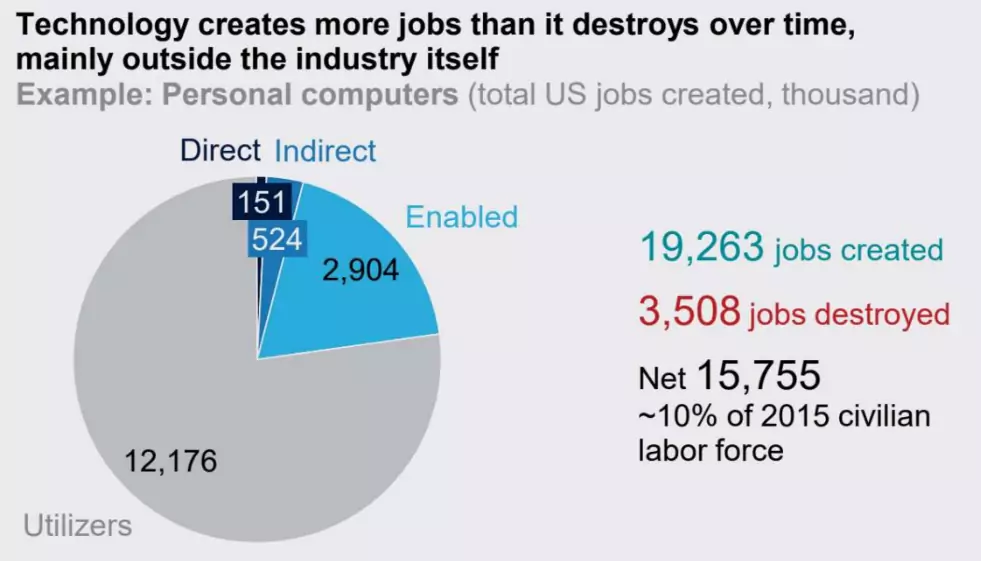
Ronald Bailey nicely summarizes in his article how recent advances in computing created many jobs that didn’t exist before:
Since the advent of the smartphone just 10 years ago, for example, an “app economy” has emerged that “now supports an astounding 1.66 million jobs in the United States,” Progressive Policy Institute economist Michael Mandel reports. According to the Entertainment Software Association, more than 220,000 jobs now depend on the game software industry. The IBISWorld consultancy estimates that 227,000 people work in web design, while the Biotechnology Innovation Organization says that U.S. bioscience companies employ 1.66 million people. Robert Cohen, a senior fellow at the Economic Strategy Institute, projects that business spending on cloud services will generate nearly $3 trillion more in gross domestic product and 8 million new jobs from 2015 to 2025.
Automation can also create new jobs by enabling efficient, scalable marketplaces for sharing people’s previously unused resources (e.g. Uber, Airbnb) and paying people to do previously unpaid work. Domestic work such as cooking, childcare, and cleaning will see greater participation by paid labor, and this trend has already been observed in advanced economies41.
Taking into account of positive spillover effects (e.g. cheaper prices from robot-produced goods), a recent study reports that for industrial robotic automation, the number of workers directly displaced by 1 more robot per thousand workers decreases from 6 to 3.3 in the U.S.42. Worldwide however, a study by Muro and Andes found no statistically significant correlation between increase in the use of industrial robots and decrease in manufacturing jobs. The International Federation of Robotics also projects that robots will create between 1.9 million and 3.5 million new jobs by 2021.
But in general, there isn’t a wide consensus on the exact number of jobs created by AI in the near future. This MIT Tech Review article shows how such estimates differ by the millions from different sources, even for numbers reporting the same time frame for the same country.
What is clear from history and current demographic and economic trends however, is that most of the new jobs in the near future, whether or not they’re created by automation, will not be the same jobs displaced by automation, and many displaced workers will have to find ways to switch occupational sectors.
Preparing for what is to come
Rising income and consumption, especially as large middle classes emerge in developing countries, will push global consumption to grow by $23 trillion from 2015 to 2030, leading to overall job and economic growth43. Job growth is also expected in newly developed industries, such as in renewable energies (which is expected to add 20 million new jobs by 2030)44.
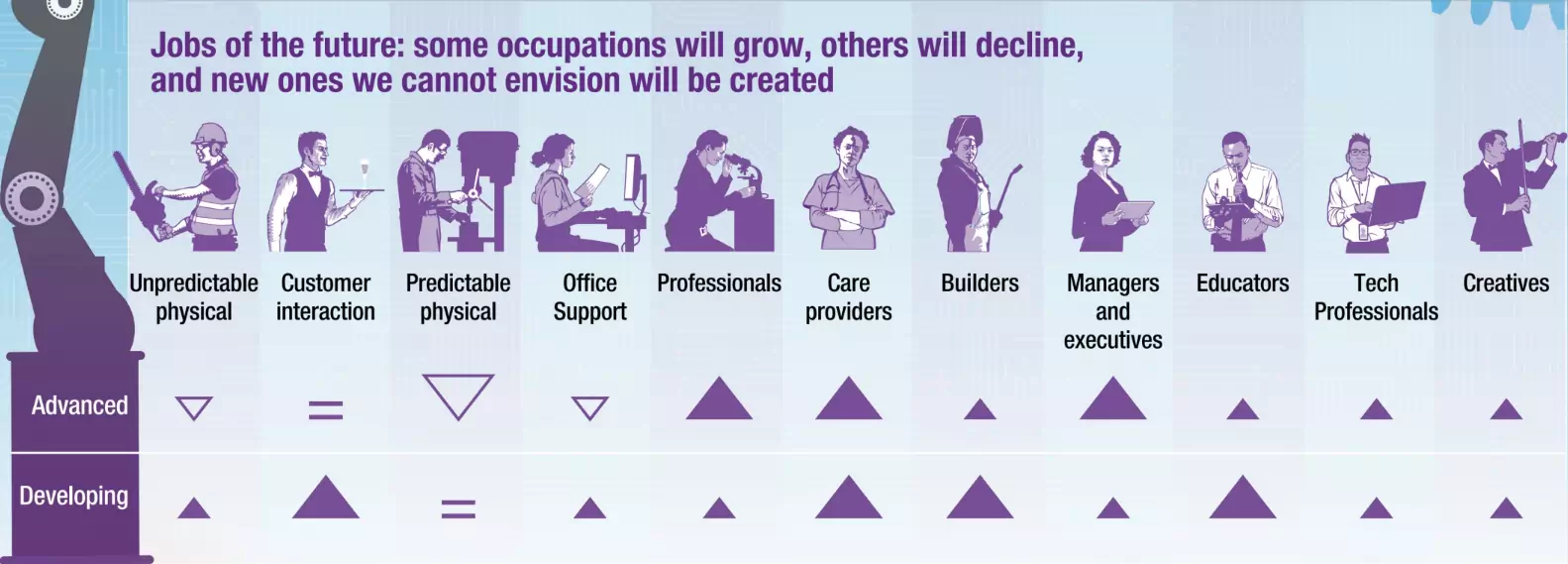
The aging population of many developed nations will induce drastic changes in labor demand for some sectors, and healthcare is one prime example. By 2030 worldwide there will be at least 300 million more people over the age of 65 than there were in 201445, and in the U.S. Americans over 65 will grow from 45 to 65 million in the same time frame46. Healthcare jobs are also very difficult to automate, owing to the necessity of human-to-human interactions. Together this means we will see significant increases in the demand for healthcare related jobs, as they are projected to grow by 80 to 130 million by 2030 worldwide47.
Similar to how jobs displaced by automation varies across different communities, so are the jobs gained. Countries with a growing workforce (like India) will face more challenges keeping all the available, young workers employed than countries with a shrinking workforce (like Japan)48. Sectors that are expected to grow and are less likely to be automated, like education and healthcare, currently employ more women than men, with women making up 79% of the workforce in healthcare and social assistance and 68% in education49.
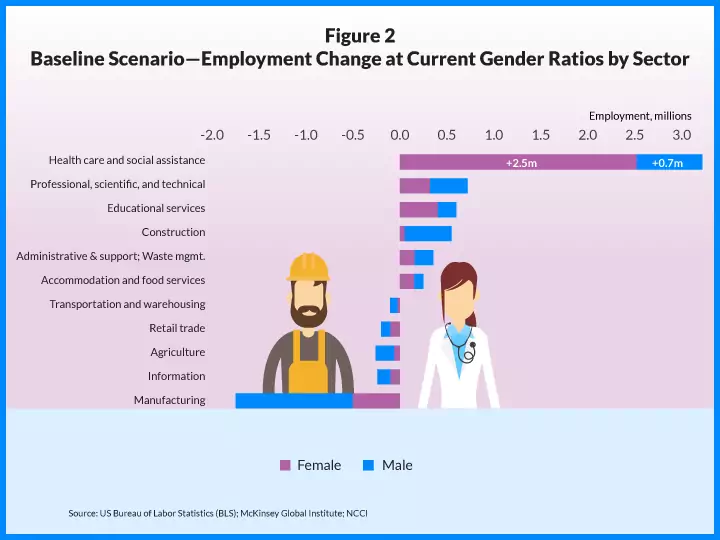
It is important for workers who are displaced by automation to quickly switch to sectors that are experiencing growth. Notably, McKinsey estimates that the increase in investment and productivity from automation can lead to enough economic growth for full employment, only if displaced workers switch to new jobs within a year50. While the current mean duration for unemployment in the U.S. is about 4 months (21 weeks), this has been slowly rising in the past decades, and will get worse if automation replaces jobs faster than workers can be retrained.
Slow reemployment generally leads to lower wages as workers are more likely to settle for lower paying jobs the longer they’re unemployed. During the British Industrial Revolution, real wages stagnated for about 50 years as productivity rose, a phenomenon called “Engels’ Pause”51. As it took decades for productivity gained by automation to benefit the masses, life for workers during that transition period was tough, as described in one article:
The gains from the early 19th century didn’t materialize overnight. In fact, this period saw unprecedented social disruption, stagnant wages, uncomfortable adjustments to civic life, and greater environmental pollution for the people living through it.
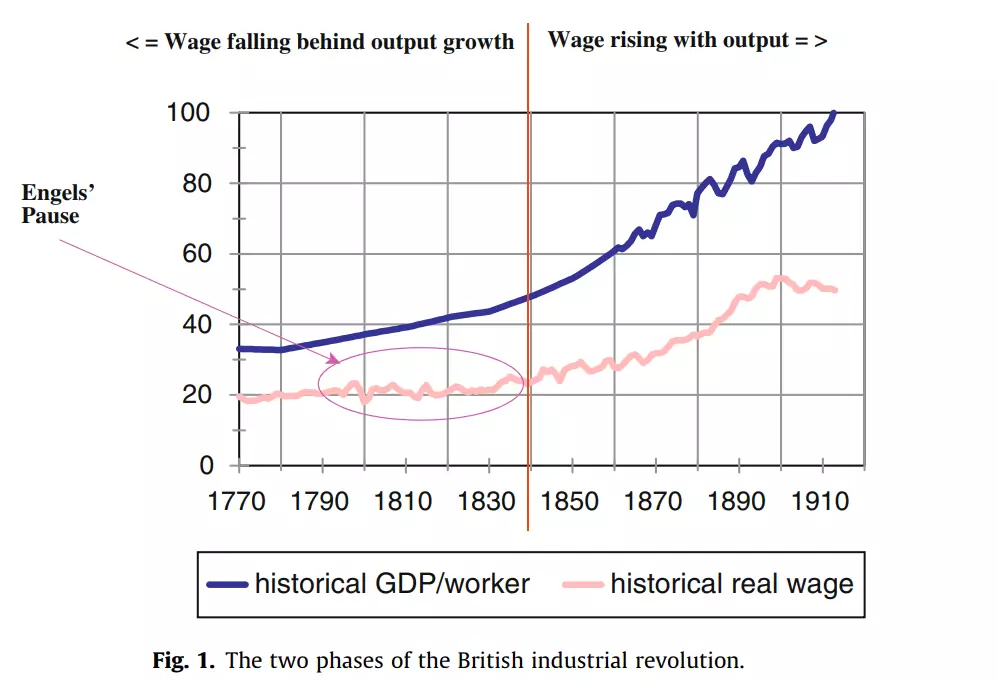
An effective way to help displaced workers to adjust is through job training, either for new jobs or upskilling for current jobs. This is especially important as advances in automation can reduce the required skills of workers, making them less valuable and more vulnerable to replacement in the future. In describing Amazon’s automated warehousing system that constantly adapts its seemingly chaotic stock patterns, Jerry Kaplan writes:
A side effect of introducing [automated warehouse management] is that it reduces the training and knowledge required of warehouse workers, making them more susceptible to replacement by forged laborers. These employees no longer have to be familiar with the location of products on the shelves; indeed, it would be near impossible to do so in such a haphazard and evolving environment. Having first simplified the skills required to get the job done, Amazon can now replace the workers that roam the warehouse floor picking those orders.
Adequately upskilling workers however, is unlikely to happen at the necessary rate and scale without government intervention. According to the OECD study, participating in both on or off the job training is significantly less likely for workers in highly automatable jobs than those with less automatable jobs52. The contrast is apparent for participating in formal education and other types of distant learning as well. And, due to the speed of current technological development, training workers at a sufficient rate will be harder than it had been in the past. As Erik Brynjolfsson and Andrew McAfee state in their book “The Second Machine Age”:
Once one concedes that it takes time for workers and organizations to adjust to technical change, then it becomes apparent that accelerating technical change can lead to widening gaps and increasing possibilities for technological unemployment.
A recent report observes this effect in the last three decades, noting that the acceleration of automation-induced job displacement, especially in manufacturing, combined with slower productivity growth during the same time period, has led to slower employment growth53.
Thus, as concluded in Graham Brown-Martin’s “Education and the Fourth Industrial Revolution”:
Workers, for their part and supported by government, have to be strategic and aim for the jobs least likely to be overtaken by robots or other machines. They have to commit to a lifetime of practicing and updating their skills by, for example, taking extra courses online and in classrooms. Lifelong learning, agility and continued training and retraining are key.
From the G.I. Bill and the high school education movement last century we know it is possible to train and upskill workers in mass, but proactive policies are definitely needed to make that happen.
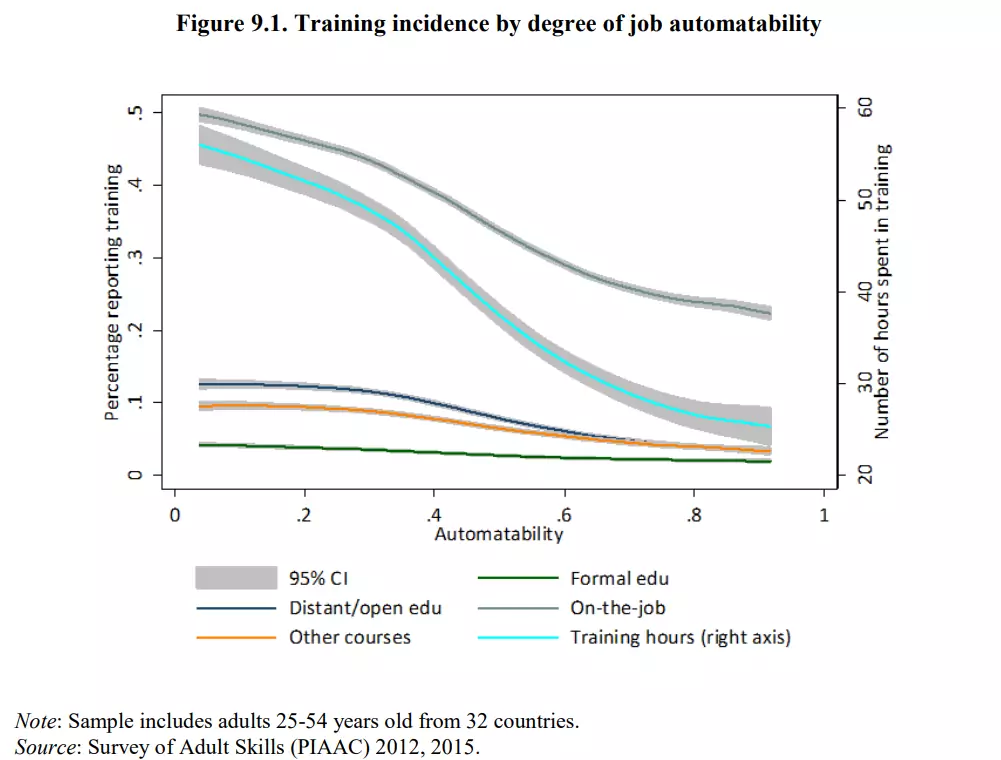
In the U.S., one option to facilitate scalable job training is letting community colleges offer occupational classes or connect students with apprenticeship-like positions. Community colleges are especially poised to do this “given their scale, their ability to adapt offerings to local market needs, and their ongoing engagement with non-baccalaureate adults at all career states”54. Other non-degree credential job-oriented education models like bootcamps, which avoids the student debt and over-education issues with four-year degrees, are also seeing some successes55.
Another way to increase the fluidity of the labor market, especially for young workers, is through the gig economy, but this approach is not without its drawbacks. While the likes of Uber and Taskrabbit can help workers more easily engage in freelance work, these jobs are far less stable and provide far fewer employment benefits than traditional full time jobs, and it’s unclear how jobs in the gig economy can lead to more permanent jobs with higher wages.
The McKinsey study lists many other potential ideas that can strengthen support for workers during job transitions, such as unemployment insurance, universal basic income (UBI), and tying gains in wage to those in productivity56. Fiscal policies that incentive human over physical capital, such as Bill Gates’ proposed robot tax and tax credits for providing worker training57, can also be considered.
UBI, which gives everyone a set amount of money per month regardless of employment status, has particularly captured the public attention in recent years. The concept is not new as it was seriously considered during the Nixon presidency. Proponents of UBI say this money will enable workers to participate in job training for new jobs without worrying about basic necessities, while critics fear that UBI is too expensive and cannot effectively replace existing welfare programs. Many cities and countries are currently experimenting with UBI, and it remains to be seen how effective it will be at improving labor market mobility and helping displaced workers transition to new jobs.
The take home message is this: just as with past employment shifts caused by technology, active, anticipatory measures in cross-sector work training and economic support during transition periods will be key to helping people who are negatively affected by AI-based automation. This may require a mix of old and new approaches, but one thing is clear: these policies will need to be proactive, and significant.
Conclusion
In a 2018 article, the authors of the Oxford study note that in comparison to recent estimates on jobs at risk of displacement by automation:
Seen through the lens of the twentieth century, our estimate, that 47% of jobs are exposed to future automation, does not seem extraordinarily high. On the contrary, the University of Mannheim and the OECD estimates seem extremely low.
For developed countries, increased automation is also happening against a backdrop of a shrinking working population. From MIT’s Work of the Future Report:
Contrary to the conventional narrative in which automation renders jobs increasingly scarce, we anticipate that, due to slowing labor force growth rates, rising ratios of retirees to workers, and increasingly restrictive immigration policies, over the next two decades industrialized countries will be grappling with more job openings than able-bodied adults to fill them.
To the best of current projections, by 2030, around 15% of jobs will be at high risk of displacement by automation, and less than 5% of jobs will be fully automatable. As such, AI-enabled automation will not disrupt jobs in the near future more than automation has in the past (e.g. the percentage of U.S. workers in agriculture fell from 40% in 1900 to 2% now). This is mainly because:
- Recent AI developments, while seemingly impressive, are still very narrow and require a lot of human input and supervision. These AI-powered tools can only replace some tasks of jobs and will augment many workers, not replace them.
- Adopting new technology is much slower than developing them due to cost in implementation and maintenance, as well as overcoming cultural and regulatory hurdles.
Automation will however, impact some communities much more than others for different countries, industries, education level, socioeconomic status, age, and gender, and these disparities may have socially and politically destabilizing effects.
Most new jobs in the future, whether or not they’re created by automation, will not be in the same field as the ones disrupted by automation. Healthcare is likely the sector with the fastest growing labor demand due to the increasing population of elders: worldwide by 2030, there will be 300 million more people over 65 than there were at 2014.
For secured economic growth and avoiding lowering wages, it is important for displaced workers to retrain and find new jobs within a year. This is unlikely to happen without government intervention, as workers whose jobs are most automatable receive the least job training. The bright side is we know facilitating large shifts in employment composition is possible - the U.S. made big investments in the G.I. Bill and mandatory secondary education last century, helping American workers move out of agriculture and into other sectors.
In closing, we highlight that fear mongering about AI taking everyone’s jobs, and AI in general, is unwarranted and does not lead to productive dialogue. Seeing recent AI advances in a broader, historical context reveals that this trend of automation has been around for a long time. And just as we have with technologies in the past, with smart policies, AI can improve everyone’s quality of life in the long run.
Citation
For attribution in academic contexts or books, please cite this work as
Jacky Liang, Ben Ramanauskas, Andrey Kurenkov, “Job Loss Due To AI — How Bad Is It Going To Be?”, Skynet Today, 2019.
BibTeX citation:
@article{liang2020aijobloss,
author = {Liang, Jacky and Ramanauskas, Ben and Kurenkov, Andrey},
title = {Job Loss Due To AI — How Bad Is It Going To Be?},
journal = {Skynet Today},
year = {2019},
howpublished = {\url{https://www.skynettoday.com/editorials/ai-automation-job-loss } },
}
Links and Additional Readings
In order of appearance:
New Study: Artificial Intelligence Is Coming For Your Job, Millennials. Vanessa McGrady. Forbes.
CEOs: The Revolution Is Coming. Alan Murray. Fortune.
Politics. Aristotle. Batoche Books.
Ulysses. James Joyce. Project Gutenberg.
Economic Possibilities for Our Grandchildren. John Maynard Keynes. Essays in Persuasion.
Technology in Postwar America. Carroll Pursell. Columbia University Press.
Most Notorious Victory Man in an Age of Automation. Ben B. Seligman. The Free Press, New York.
When People Feared Computers. Adrienne Lafrance. The Atlantic.
Did living standards improve during the Industrial Revolution? The Economist.
Reconceptualizing the Industrial Revolution. Horn et al. MIT Press.
The Industrial Revolution, 1760-1830. T. S. Ashton.
Capitalism, Socialism & Democracy. Joseph A. Schumpeter. Routledge.
From brawn to brains. The impact of technology on jobs in the UK. Deloitte.
Computer Wins on ‘Jeopardy!’: Trivial, It’s Not. John Markoff. The New York Times.
What’s new, Atlas? Boston Dynamics.
Review of Deep Learning Algorithms for Image Classification. Arthur Ouaknine.
Guide to Automated Journalism. Andreas Graefe. Columbia Journalism Review.
11 Startups Using AI to Compose Music. Nanalyze.
GAN 2.0: NVIDIA’s Hyperrealistic Face Generator. Synced.
How AI And Machine Learning Are Transforming Law Firms And The Legal Sector. Bernard Marr. Forbes.
Humans Need Not Apply. CGP Grey.
Hey Buddy, Can You Give Me a Hand? Boston Dynamics.
What’s really going on in those Boston Dynamics robot videos? Richard Priday. Wired.
Layoffs at Watson Health Reveal IBM’s Problem With AI. Eliza Strickland. IEEE Spectrum.
These 6 companies are making the self-driving truck a reality. Alistair Charlton. Salon.
Waymo launches self-driving car service Waymo One. Kirsten Korosec. TechCrunch.
Waymo CEO: Autonomous cars won’t ever be able to drive in all conditions. Shara Tibken. CNET.
AI VS. LAWYERS: THE ULTIMATE SHOWDOWN. LawGeex.
Make Music and Art Using Machine Learning. Project Magenta. Google.
Multiplicity: Are AI and Robots a Threat…or an Opportunity? Ken Goldberg.
The Robot-Human Alliance. Ken Goldberg.
ASIAN DEVELOPMENT OUTLOOK 2018 HOW TECHNOLOGY AFFECTS JOBS. Asian Development Bank.
Automation and anxiety. The Economist.
AI, the Transcription Economy, and the Future of Work
A New Chart Conclusively Proves That Automation is a Serious Threat. Scott Santens. Futurism.
Are Robots Going to Steal Our Jobs?. Ronald Bailey. Reason.
The Impact of Robots on Productivity, Employment and Jobs. International Federation of Robotics.
Averting the old age crisis : policies to protect the old and promote growth. The World Bank.
The Second Machine Age. Erik Brynjolfsson and Andrew McAfee.
Education and the Fourth Industrial Revolution. Graham Brown-Martin. Groupe Media TFO.
Acemoglu, D., Restrepo, P. Automation and New Tasks: How Technology Displaces and Reinstates Labor.
The robot that takes your job should pay taxes, says Bill Gates. Kevin Delaney. Quartz.
Nixon’s Basic Income Plan. Rutger Bregman. Jacobin.
Current UBI Experiments: An update for July 2018. Karl Widerquist. Basic Income Earth Network.
AI may not be bad news for workers. The Economist.
The Workforce Needs AI – But AI Needs Human Workers, Too. Amir Konigsberg. Forbes.
How AI will make us think harder. Kaveh Waddell. Axios.
How AI Can Amplify Human Competencies. Ken Goldberg. MIT Sloan.
Cognitive Diversity: AI & The Future of Work. Tata Communications.
The loom and the thresher: Lessons in technological worker displacement
References
In order of appearance:
NCCI Insights. The Impact of Automation on Employment - Part 2. October 9, 2017.
American Trucking Association (ATA). Truck Driver Shortage Analysis. 2015
Gittleman, M. Monaco, K. Automation Isn’t About to Make Truckers Obsolete. 2019
Nedelkosk, L., Quintini, G. Automation, skills use and training. OECD. March 8, 2018.
Michael Webb. The Impact of Artificial Intelligence on the Labor Market. November, 2019.
Acemoglu, D., Restrepo, P. Robots and Jobs: Evidence from US Labor Markets. July 16, 2018.
MIT. The Work of the Future: Shaping Technology and Institutions Fall 2019 Report. 2019
-
Frey and Osborne. Page 1. ↩
-
Frey and Osborne. Page 6. ↩
-
Goldin and Katz. Page 1. ↩
-
While algorithms that play games like chess do fall under the AI category in computer science, the observation here is that nowadays the public rarely expects chess software to be marketed as AI ↩
-
Frey and Osborne. Page 15. ↩
-
Frey and Osborne, McKinsey, NCCI, Gartner ↩
-
McKinsey. Page 2. Exhibit E1. 15% is the midpoint estimate by McKinsey, which gives an upper bound of 30% in the most extreme scenario. ↩
-
Nedelkosk and Quintini. Page 7 ↩
-
NCCI. This is a complex topic with ongoing studies; our claim here is that the automation incentive due to higher minimum wage (not wages in general) may not be as high as perceived. ↩
-
Nedelkosk and Quintini. Page 8. ↩
-
As emphasized in this report, inequality is less acute in other industrialized nations with similar levels of rising productivity and automation as the U.S. Income distribution is shaped by many factors including but not limited to educational systems, labor and financial market regulations, and fiscal policies. In other words, inequality is not wholly caused by automation, and nor will it be fixed with less automation. ↩
-
Acemoglu and Restrepo. Page 3. ↩
-
Nedelkosk and Quintini. Page 9. ↩







